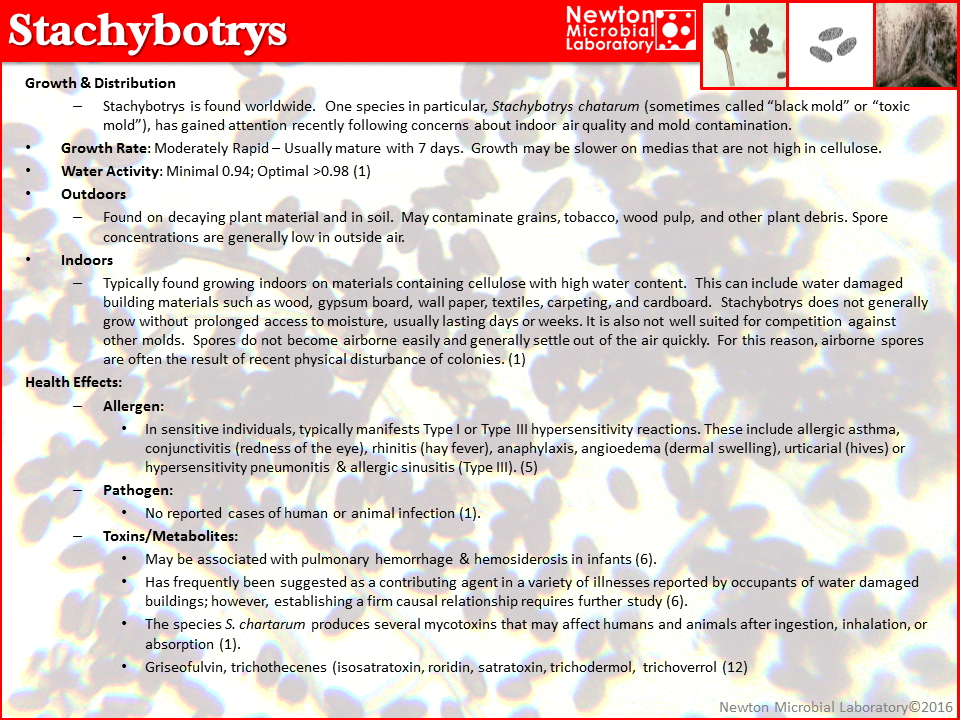Stachybotrys
Growth & Distribution
Stachybotrys is found worldwide. One species in particular, Stachybotrys chatarum (sometimes called “black mold” or “toxic mold”), has gained attention recently following concerns about indoor air quality and mold contamination.
Growth Rate: Moderately Rapid – Usually mature with 7 days. Growth may be slower on medias that are not high in cellulose.
Water Activity: Minimal 0.94; Optimal >0.98 (1)
Outdoors
Found on decaying plant material and in soil. May contaminate grains, tobacco, wood pulp, and other plant debris. Spore concentrations are generally low in outside air.
Indoors
Typically found growing indoors on materials containing cellulose with high water content. This can include water damaged building materials such as wood, gypsum board, wall paper, textiles, carpeting, and cardboard. Stachybotrys does not generally grow without prolonged access to moisture, usually lasting days or weeks. It is also not well suited for competition against other molds. Spores do not become airborne easily and generally settle out of the air quickly. For this reason, airborne spores are often the result of recent physical disturbance of colonies. (1)
Health Effects
Allergen:
In sensitive individuals, typically manifests Type I or Type III hypersensitivity reactions. These include allergic asthma, conjunctivitis (redness of the eye), rhinitis (hay fever), anaphylaxis, angioedema (dermal swelling), urticarial (hives) or hypersensitivity pneumonitis & allergic sinusitis (Type III). (5)
Pathogen:
No reported cases of human or animal infection (1).
Toxins/Metabolites:
May be associated with pulmonary hemorrhage & hemosiderosis in infants (6).
Has frequently been suggested as a contributing agent in a variety of illnesses reported by occupants of water damaged buildings; however, establishing a firm causal relationship requires further study (6).
The species S. chartarum produces several mycotoxins that may affect humans and animals after ingestion, inhalation, or absorption (1).
Griseofulvin, trichothecenes (isosatratoxin, roridin, satratoxin, trichodermol, trichoverrol (12)

